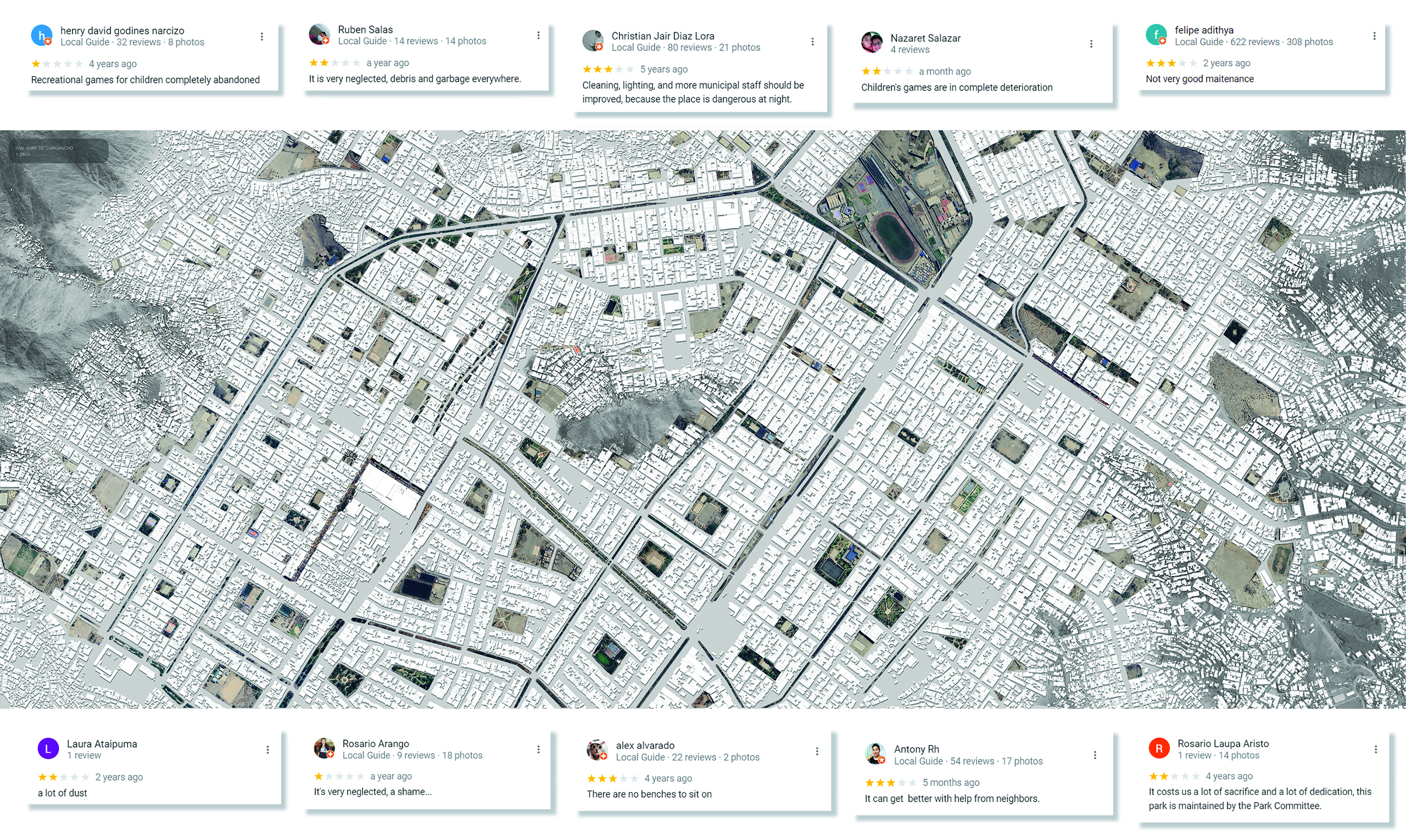Informality is problematic. San Juan de Lurigancho, a former informal settlement in Lima, Peru, is not better just because it became formal. It was neglected in every aspect for multiple decades, yet the lack of resources hasn’t stopped its citizens from owning their spaces.
Through a bottom-up/top-down approach, inspired by local intelligence’s self-built artifacts, a placemaking strategy that uses greenery and water aims to reform and activate deficient public space into civic nodes that: 1. empower the community to incrementally rehabilitate their environments, 2. enhance urban landscape resiliency, 3. and address the decline of public space in the district.
Water scarcity presents a significant challenge in Lima, a desert city with minimal rainfall. However, the proposal integrates water collection and retention systems by leveraging the city’s high humidity and topography. Implementing district-wide fog-catching infrastructure ensures residents have consistent access to water for personal use and irrigating reformed public spaces, thereby fostering self-sustainability. Each test site pairs water-centric strategies with community-driven interventions, such as interactive playgrounds, multipurpose markets, and organized public spaces. Incorporating elements like water tanks, fog catchers, adaptable infrastructure, low-watering vegetation, and alternative hardscapes, the designs prioritize durability and accessibility while promoting community engagement and ownership.
As a mediator between two powerful agents—the residents and the municipality—this thesis builds upon local techniques and self-built artifacts to enhance and test strategies on larger neglected public spaces with the support of fog-catching infrastructure. This approach creates frameworks that empower the community while integrating innovative design solutions tailored to their needs. In essence, the thesis addresses the consequences of governmental neglect by harnessing local intelligence and conscious design. It reframes perceptions of informal settlements, empowers communities, and seeks to foster a sense of belonging and agency, ultimately rehabilitating both the social fabric and physical resilience of the district.












